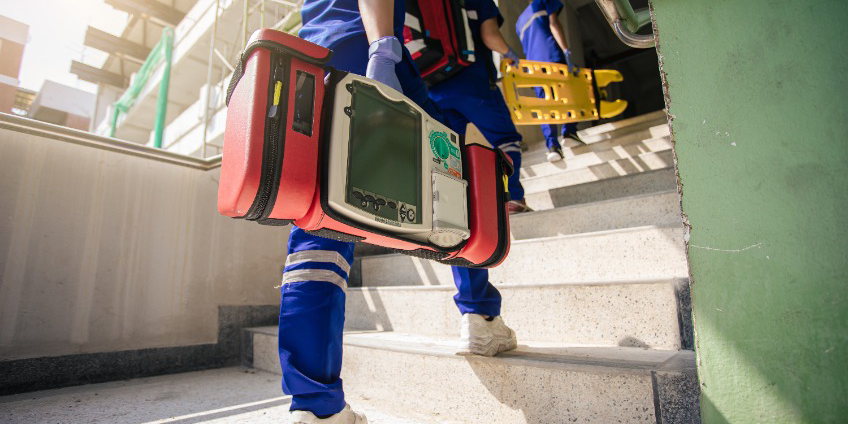
Paramedic training doesn’t just end the minute an EMT graduates from their school or program. In today’s world, medical needs and environments are constantly evolving, and professionals need versatile skillsets to attend to a wide range of emergencies daily.
As we enter the new year, it’s the perfect time to set some training resolutions for you and your team. Here are some recommendations and practices to consider.
Understanding your specific requirements
Different states have varying requirements for paramedic training, but nationally registered paramedics must complete 60 hours of continuing education every two years. This may encompass webinars, online classes and on-site trainings. Before setting your training resolutions for 2023, make sure to check with your state licensing board to ensure the continuing education units (CEU) you choose satisfy requirements.
When weighing the different training options at your disposal, ask yourself these questions:
- Is this training course accepted in my state?
- How many credit hours will I get for this course?
- Do I need a specific type of credit hours, and will this course fulfill that requirement?
- Is the course based on current research?
- Does it address new or shifting standards?
- Does it fill any skill gaps I have in my training?
- Does it address the needs of the specific population(s) I serve?
Setting your resolutions for 2023
When setting your resolutions for the year ahead, focus on training opportunities that will not only enhance your knowledge in the field, but also maximize your job effectiveness, communication with others on your team, and your understanding of diverse patient needs and concerns.
Research and preparation with textbooks, online materials and studying the latest EMS news and innovations may give you important background information on possible patient scenarios, but practicing those skills in training will provide you with the hands-on experience you need to apply them on the job, in real time.
Diversifying the practice patients, scenarios and environments in your modules is an essential part of EMS training. This includes:
- Practicing on a wide variety of mannequins (adult, child, infant, neonate)
- Practicing on various surfaces (not just tabletops), like the floor, in a chair and in confined spaces
- Practicing in low lighting
- Practicing with a wide variety of adjuncts (this way you’ll have more alternatives if the original method fails)
EMS work isn’t a one-size-fits-all process — each patient has unique physical and psychological characteristics that must be considered when employing airway management techniques. Review and practice addressing difficult patient airway characteristics and scenarios. Here are several unique characteristics and corresponding treatment factors to prepare for:
- Understand the anatomy, trauma and medical conditions affecting your patients with difficult airways:
- Anatomy: Familiarize yourself with challenging physical traits in patients, such as obesity, short/thick necks, anterior tracheas, or extensive dental hardware/overbites
- Trauma: Understand how traumatic injuries in patients, particularly those of the face and mouth, can interfere with airway visualization and tube placement
- Medical conditions: Understand how pre-existing conditions, such as masses or congenital defects (cleft palate), can make intubation significantly more challenging
Are there gaps in your understanding of those areas? Perhaps that is something you can turn into a training resolution for 2023.
Finding the right resources
You and your team should remain on the lookout for helpful resources to enhance your training experience and stay up to date on the latest trends, concerns and research in the EMS field.
For instance, the National Emerging Special Pathogens Training & Education Center (NETEC) has a resource library on its website with tools and guidance on a range of diseases, emergencies and conditions, such as PPE compliance, biosafety, infection prevention control and managing inventory and personnel.
CareerCert’s “Fire and EMS Training Resources + Free CEs to Help During COVID-19” page provides a wide variety of resources and training management tools for EMS providers, including webinars, best practices and protocols for infection control, online EMS and fire courses, and even resources for fighting burnout and honoring EMS providers’ mental health. The Journal of Emergency Medical Services (JEMS) also hosts various EMS events and training summits each year.
Entering the new year is a great time to refresh your skills and develop knowledge in areas you’re less familiar with. It’s also an important time to set resolutions for the year ahead. These may involve completing trainings in new areas, getting more comfortable using certain equipment, or improving communication and work among your team. Read this blog to learn more about why ongoing training is essential for your team.













